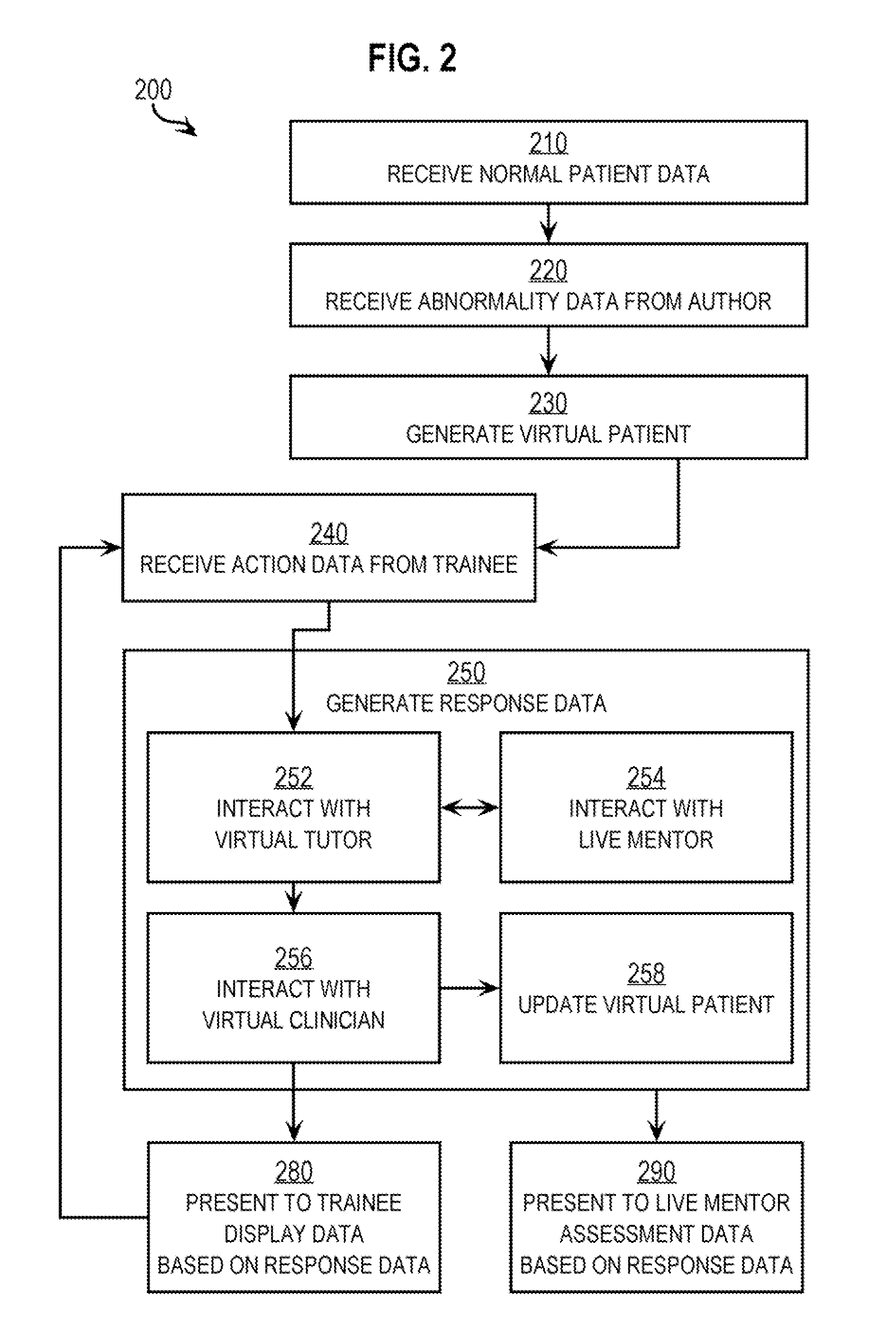Techniques for Implementing Virtual Persons in a System to Train Medical Personnel
- Summary
- Abstract
- Description
- Claims
- Application Information
AI Technical Summary
Benefits of technology
Problems solved by technology
Method used
Image
Examples
Embodiment Construction
[0003] This invention was made in part with Government support under Contract No. DAMD17-03-2-0001 awarded by the Department of the Army. The Government has certain rights in the invention.
BACKGROUND OF THE INVENTION
[0004] 1. Field of the Invention
[0005] The present invention relates to medical care delivery, and in particular to improving medical care delivery by improving decision-making skills of medical personnel with systems that simulate interactions with a mentor or a patient using a virtual patient or virtual tutor or both.
[0006] 2. Description of the Related Art
[0007] Medical care delivery is major industry in the United States. An important component of medical care delivery is a cadre of trained medical care professionals who can diagnose patient condition and prescribe treatment protocols using cognitive skills. The fewer errors made by this cadre, the better is the medical care delivered. Currently, cognitive skills of medical care professionals are developed by clo...
PUM
 Login to View More
Login to View More Abstract
Description
Claims
Application Information
 Login to View More
Login to View More - R&D
- Intellectual Property
- Life Sciences
- Materials
- Tech Scout
- Unparalleled Data Quality
- Higher Quality Content
- 60% Fewer Hallucinations
Browse by: Latest US Patents, China's latest patents, Technical Efficacy Thesaurus, Application Domain, Technology Topic, Popular Technical Reports.
© 2025 PatSnap. All rights reserved.Legal|Privacy policy|Modern Slavery Act Transparency Statement|Sitemap|About US| Contact US: help@patsnap.com



